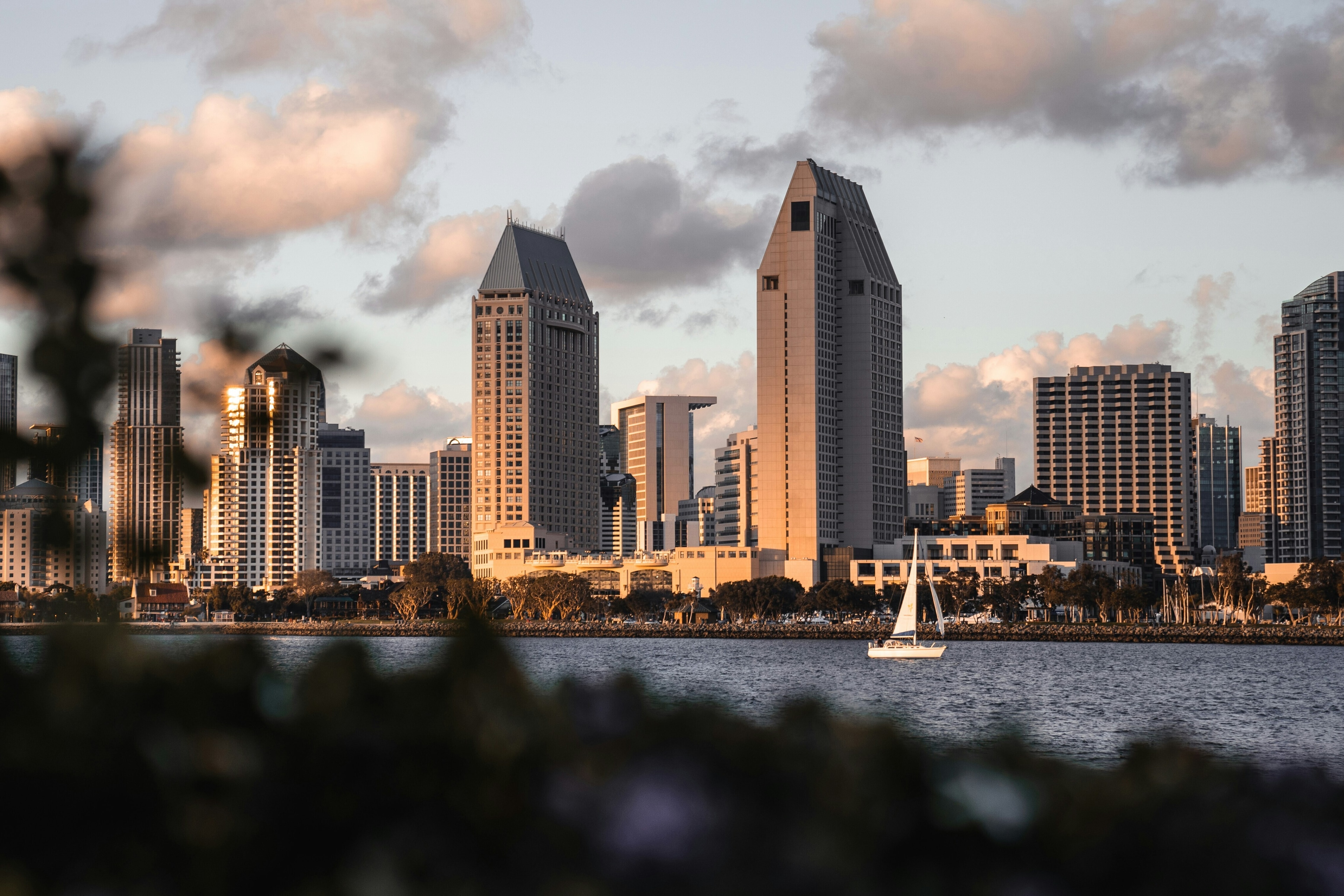From Athens to Dhaka: how chief heat officers are battling the heat

Cities around the world are appointing chief heat officers to lead the fight against rising temperatures. Image: Pexels/Quang Nguyen Vinh

Get involved with our crowdsourced digital platform to deliver impact at scale
Stay up to date:
Greece
- Densely built urban areas with a large amount of concrete and metal can absorb and trap heat, creating a phenomenon called the 'urban heat island' effect.
- As a result, cities are becoming hotter, leading to serious health problems, especially for vulnerable members of society such as the young and very old.
- Cities around the world are appointing chief heat officers who are working together to share knowledge and advocate for funding in cities.
Cities are all different, but they have one thing in common: they’re hotter than surrounding rural areas, thanks to all that concrete and metal, which absorb and reflect heat, a phenomenon known as the urban heat island effect. And when temperatures rise, life becomes uncomfortable at best and downright dangerous at worst.
A group of seven women in cities across the globe are trying to focus thinking on the number one health issue faced by city dwellers. These chief heat officers– a role pioneered by the Adrienne Arsht-Rockefeller Foundation Resilience Centre – aim to join the dots across city governments and the private sector to protect their communities and make their cities more resilient to heat.
What is the World Economic Forum doing to encourage healthy living in cities?
The Ethical Corporation magazine talked to three of them on different continents about both the challenges and the interventions they’re developing.
Eleni Myrivili, former chief heat officer for Athens, Greece

“I think that it’s helpful for cities to organise their different interventions and initiatives (around) three pillars: awareness, preparedness and redesign,” says Eleni Myrivili, who is now global chief heat officer (CHO) for U.N. Habitat and Arsht-Rock, with a remit to build resilience in cities across the globe. She was Europe’s first CHO, appointed in 2021.
“First, we need to raise awareness. How do we make sure that our decision-makers and policymakers understand the seriousness of the situation and take the right measures, and advocate for it, because a lot of people still don't realise that it's an incredible danger,” she adds.
Athens, for example, has developed a heat health categorisation system, using heat, humidity and air pollution data to forecast how dangerous a coming heatwave could be depending on where in the city a person lives. An app provides personalised risk data, alongside advice on how to protect oneself. A messaging system is also in place for those in contact with vulnerable populations such as the homeless, young children or older citizens.
In a densely built city like Athens, tree cover is desperately needed. A loan from the European Investment bank provided for the creation of three green corridors connecting tree canopies to existing green spaces. Besides cooling the city, says Myrivili, this boosts biodiversity and, critically, can save lives. A modelling study last year suggested that increasing city tree cover to 30%, from a European city average of around 14%, could have cut deaths attributable to heat by a third.
The city is also rejuvenating its parks. But during heatwaves there may not be much water, and without irrigation a park isn’t as effective at cooling. So she hit upon the idea of cleaning up sewage water and using it for irrigation, a system used in the Middle East. Athens is now trialling a shipping container-sized unit to filter water in one park before deciding whether to expand its use.
Eight municipalities, together with the water and sewage companies, have come together to revive a 24km long underground aqueduct built by the Romans. “It still has a large amount of water in it that hasn't been used, and it ends up in the sewage,” says Myrivili. It could provide a backup for irrigation at times of extreme heat.
In her current role, Myrivili is working with the Global Covenant of Mayors to address how national climate funding can be targeted for city-level solutions. This is especially critical in the Global South, where cities are wrestling with heat impacts on informal settlements.
The group is also trying to raise awareness of the need for cities to prepare for a hotter future within platforms including United Nations agencies, the World Economic Foundation and the banking sector.
Bushra Afreen, chief heat officer for North Dhaka, Bangladesh

“The central government still hasn't made heat an extreme health hazard. It still doesn't see extreme heat as a disaster. And I'm on a mission to change that,” says Bushra Afreen, who has been chief heat officer since August 2023.
Dhaka is already one of the world’s most crowded cities, with one of the highest levels of air pollution. She explains that its tightly packed apartment complexes have low ceilings with ubiquitous air conditioning units, which cause “disastrous” thermal radiation outside.
People constantly pour into the city, many of them climate migrants, who find shelter under heat-trapping corrugated metal. “You just cannot imagine the levels of poverty, and not just economic poverty, but education and cultural poverty,” says Afreen. “People endure such hardship.”
She is racing to get a heat awareness campaign up and running for this year’s heat season, but is treading a delicate path. “If you are saying ‘this is dangerous, and this is another thing that you have to be wary of’, you also have to give them a solution or resources that they can have access to … like water stations.”
She is also looking at whether mosques or schools could be opened to provide shelter from the heat.
The challenge is to reach a hugely variable demographic, some of whom may not realise how vulnerable they are – pregnant women, or people with chronic illness, for example. “What are the most effective words and pictures that can reach everyone?”
The team is working with the Bangladesh Meteorological Department on a heat health feature for the city’s app, which could provide advice to smartphone users tailored to their mode of travel or occupation. But it has to work from generic thresholds because health data is not shared, so it has no visibility on excess heat deaths or hospital admissions.
The challenge of strained and fraying infrastructure is magnified because Dhaka doesn’t have control of its own water supply, drains or roads. That means Dhaka “doesn't have the capacity to deal with the urgent and complex matters that it needs to”, says Afreen.
She adds: “I am talking to different government sectors and authorities as well as private organisations to see if we can work together to create new pathways. If the city can't do everything, maybe somebody else can and we can work together to create solutions.”
One solution she has been able to make progress on is the creation of urban forests. The first should be planted within the next few months; another before the autumn. A team of experts has selected 170 species to create a multi-layered canopy to encourage nature back into the city, and to repel the mosquitos that have become a serious hazard.
She also wants to develop an overarching heat action strategy, but first there are partnerships and bridges to be built.
Jane Gilbert, chief heat officer, Miami-Dade County, US

“I really believe that where we're going is a more desirable type of city, but it comes down to getting enough collective buy-in to have the political will to pass policies, and to change practices,” says Jane Gilbert, who has held the post since June 2021.
Her patch of 2.7 million people, including the city of Miami, is the geographic size of a small U.S. state, sandwiched between two water bodies: the Everglades, the largest subtropical wetland in the United States, and Biscayne Bay on the coast.
One of the goals of the county’s heat action plan is cooling, which boils down to better urban planning. “We have neighbourhoods that are up to 10 degrees hotter than others, where we have people showing up in the emergency room at rates four or five times the rate of other zip codes. We've got people ending up in ER because they waited at an unsheltered bus stop too long.”
Land surface temperature is one of the top correlating factors for a trip to emergency departments, and it’s rising thanks to climate change, coupled with waste heat from cars and buildings, dark, impervious surfaces and a lack of vegetation.
The county’s plan for resilience is focused on a public transit system so people can move around without their cars, and tree planting in those hottest neighbourhoods. While its location between two water bodies has a cooling effect, Miami is highly vulnerable to flooding (being less than 2 metres above sea level) and there’s continual pressure from developers to expand urban spaces.
“We're trying to say ‘no, we need to be more walkable, bikeable, public transit-friendly’ and to concentrate in certain areas where we can really invest in building the resilient infrastructure that we need,” says Gilbert. That could mean updates to landscape and zoning codes. “We need to rethink where we're encouraging people to build and not build. Maybe it's better to have a higher building, and then more green space, so we can preserve those legacy trees,” she adds.
Her office was instrumental in getting a change to building codes, which came into force this year, to require “cool” roofs, including in all buildings the county finances. These are designed to reflect more sunlight than a conventional roof, and can reduce air conditioning demand by 20%, she says. It’s also looking at piloting methods to make city pavements cooler. Some coatings being tested in the U.S. are made with titanium dioxide (an ingredient of sunscreen) and they may provide not only cooler surfaces but also absorb exhaust pollutants.
Not everyone is happy with all the policies being pursued, as developers fear they’ll bear the cost. But Gilbert points to a tough building code introduced in the wake of Hurricane Andrew in 1992, which caused $30 billion worth of damage. “Builders and developers fought against it (saying) it would ruin the economy. Well, Miami-Dade couldn’t be flourishing more.”
Don't miss any update on this topic
Create a free account and access your personalized content collection with our latest publications and analyses.
License and Republishing
World Economic Forum articles may be republished in accordance with the Creative Commons Attribution-NonCommercial-NoDerivatives 4.0 International Public License, and in accordance with our Terms of Use.
The views expressed in this article are those of the author alone and not the World Economic Forum.
The Agenda Weekly
A weekly update of the most important issues driving the global agenda
You can unsubscribe at any time using the link in our emails. For more details, review our privacy policy.
More on Urban TransformationSee all
Anna Paula Brito
May 15, 2024
Andrea Mechelli
May 15, 2024
Alison Hagan
May 15, 2024
Madeleine North
May 13, 2024
Jesse Saldivar, Alaina Ladner, Marc Starkey and Brittany Syz
May 13, 2024







